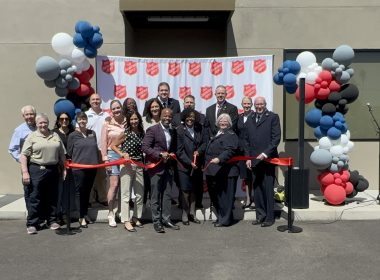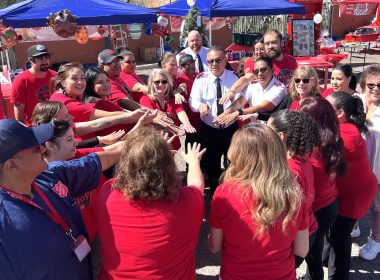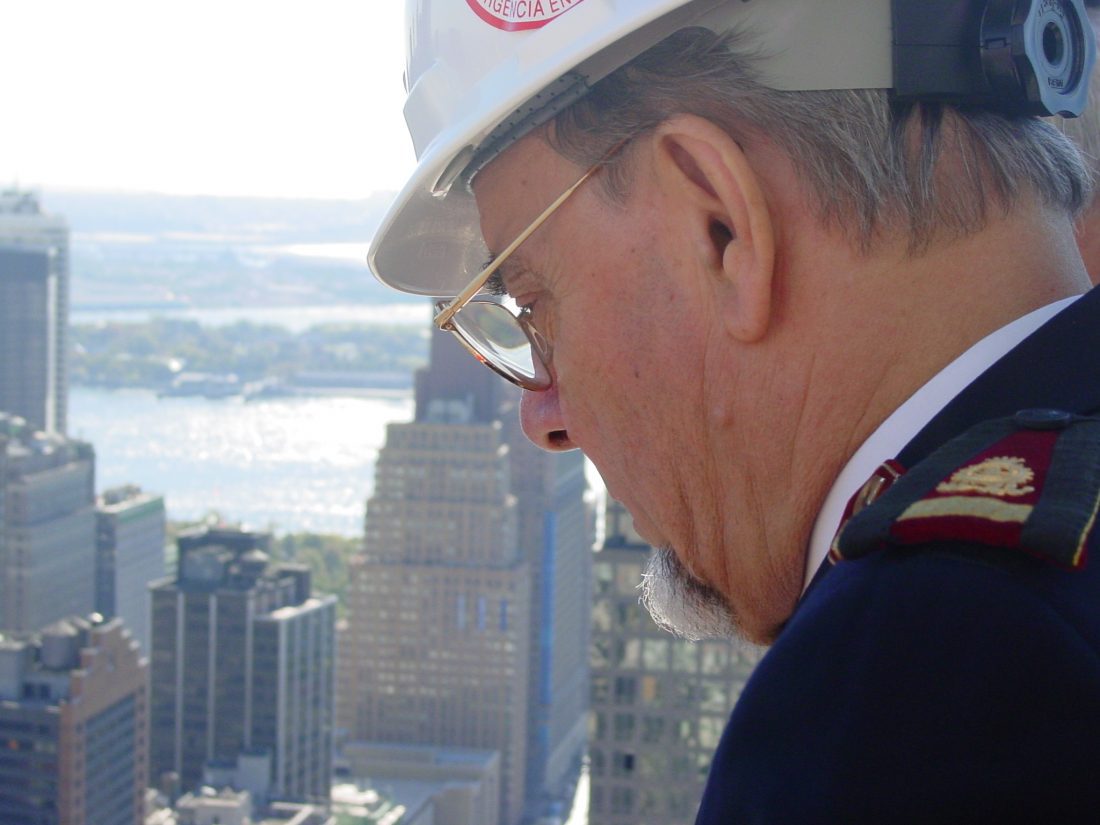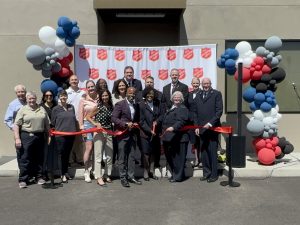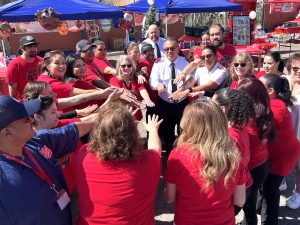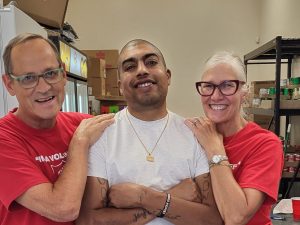As the day began we had no idea America was under attack.
It seemed like a completely beautiful, average, late summer day, just a touch of fall in the air, bright with a promise of heat in the early afternoon. Television cameras focused on talk-show hosts providing minutes of media for celebrities hawking their latest products. Home audiences around the nation sat sipping a last cup of coffee others scurried off to work radios tuned to news stations that ran regular traffic reports. It was a typical September 11, 2001—calm and peaceful.
Then, slowly, a fully loaded Boeing 767 impaled itself on the South Tower of the dominant feature of New York’s skyline—The World Trade Center.
People stopped and stared, confused, perplexed. How could something like this have happened? What an incredible accident! Flames burst forth around the 90th floor. Firefighters appeared and rushed into the building.
Then, horribly, it became clear it was no accident at all. A second similar plane mimicked the first and slammed into the other twin.
The horror stunned us as the twin towers, mortally weakened from the intense heat of the jet fuel, slowly collapsed in an explosion of dust and dirt. Their fall seemed almost graceful as each in turn slid to earth, entombing the bodies of their occupants.
But it wasn’t over.
A similar attack had a Washington, D.C. target the headquarters of the nations military the Pentagon. The sacrificial courage of passengers on a fourth plane caused it to miss its unknown target and crash in a Pennsylvania field.
Passenger airliners had become bombs. The death toll was in the thousands.
At first, our minds could not even grasp the immensity of such a simple attack—four passenger airliners, commandeered to wreak havoc on a civilian population.
Who would do this? Why was this nation targeted so cruelly? How could it happen?
No cause claimed responsibility. No one gave it specific meaning.
Gradually, the names of 18 hijackers became evident and they were all Arabic. An additional name crept into our consciousness—al Qaeda, a terrorist organization, late to the cause of narrow, rigid Islamic fundamentalism, headquartered, it seemed in the complex cave structure within the White Mountains of Afghanistan.
Our feeling spun through an array of circuitry stunned shock, fear and vulnerability, empathy for victims and families and anger. It stimulated a magnificent outpouring of altruism.
Everyone wanted to do something to help in some way to fight back. We wanted to give. Following a continuous blitz of advertising in every media outlet possible, The American Red Cross generated in excess of $1 billion dollars.
The Army’s initial response did not include any media blitz nor did it involve extensive press releases or news broadcasts. Few television appearances included Army personnel, and then the ones shown seemed always to be actually working at helping others. It’s true. Before the dust had even settled, The Salvation Army had canteens in operation at Ground Zero, the site of the former twin towers. A year later, after having been identified as the major player for assistance in the Red Zone, the Army was the last to leave. First in, last out.
With less than a minimal effort in seeking contributions, the Army raised nearly $88 million, all spent in response to this disaster.
Another immediate response was an explosion of patriotism. Flag sales skyrocketed. The red, white and blue decorated lapels and hats and dresses. Irving Berlin’s God Bless America became the most popular tune of the day and made the career of one New York fireman.
We became determined not to be overcome by our fear not to relinquish our freedom not to allow generalized anti-Islamic racism or ethnocentrism to weaken our commitment to our ethic and provide the terrorists victory. We have initiated a process by which information and intelligence gathering can be better coordinated. Our government is exploring ways to assure that law enforcement efforts throughout the land have improved ways to stay connected.
In the process, we have become stronger as a people. We are far from perfect. Impatience still grabs some at airports. Overzealousness has caused some among us to ignore the Bill of Rights. Some still choose to live in continual fear. Some still choose to ignore the reality of life in a different world in which we are engaged in a different form of self-protective action.
But life goes on. And it’s for the living.
PIER 49
Major Debi Shrum, Turlock, California corps officer, served at the mobile canteen stationed at Pier 49 in November, providing food, coffee and tea to those affected by the disaster, as well as to recovery workers. Debi also talked with several survivors and family members of those lost.
One of her most vivid memories was of a woman named Florence, who came to Pier 49 often in hope of speaking to anyone who may have seen her son. She would show people his picture, which she wore on a chain around her neck. A man recognized her son, and told a nearby officer that he had seen him holding open the elevator for everyone rushing to leave the building. Unfortunately, her son never made it out alive. The observer told the police officer because he had feared the mother’s reaction.
Debi also recalls meeting a man who often came to smoke a cigarette near the mobile canteen. He said he was in the area when the towers collapsed because he was a headhunter, and had just placed two employees in positions at the World Trade Center for work starting on September 11. Unfortunately, neither made it out alive.
MEDICAL EXAMINER’S OFFICE
Salvation Army volunteer Bill Angle is one of Reno, Nevada’s busiest–and always ready to lend a hand, especially for disaster relief.
His assignment in New York was to report to “Sal’s Café” – The Salvation Army feeding site set up at the Medical Examiner’s Office, where he would assume the role of supervisor.
Bill says Sal’s Cafe offered more than food. It provided a refuge, where rescue workers, firefighters and police officers could escape their horrific tasks for a few minutes even though those tasks were the main topic of conversation. Sometimes visitors to the makeshift restaurant included victims’ families that had received word that the remains of their loved ones had been recovered. There was a special box for prayer requests prayers for the victims of the attacks, their families, the rescuers and other workers, etc.
“The morgue itself was a lot of things,” says Bill, “DNA and dental testing, law enforcement investigators coming and going and of course, there was ‘Memorial Park’. Memorial Park was a great big tent, where they had 18 trailers that held the remains of the recovered victims. Every day that I was there, you’d see fire trucks and police cars with their lights on, and on top of the fire trucks caskets covered by United States flags.” Bill also talks about a special flag on the east side of the tent. “The large flag consisted of over 3,000 small flags (about 4″ square) each with the name of every person that died September 11.” Bill says the flag later was supposed to fly from one of the U.S. ships protecting the coastline and ultimately go to the Smithsonian Institute.
Another memory stands out in Bill’s mind: In addition to the volunteers, there was usually a chaplain at the morgue. One night, there was no clergy available when the remains of a firefighter were recovered. His family had requested someone to pray over the body. Bill was asked to do it. They took him down to ground zero to the family ramp. At the bottom were a woman and her four children next to a stretcher with a body bag. “She was sobbing and holding her four children. She asked who I was. I told her I was a Salvation Army volunteer – that I was there to pray over her husband. She was so grateful that I was there. I said a few prayers and between the two of us, I don’t know who cried more!”
How did his experience affect him? Bill says the images are always with him. “I’ll never forget the time I spent in New York. It was a mind-boggling experience, but knowing I was able to help and that people were so grateful for the help I’d do it again in a minute.”
PENTAGON
An 84-year-old WWII veteran, Anthony Bei, arrived at The Salvation Army’s Arlington, Virginia corps, where the planning was being organized for the relief effort at the Pentagon crash site. He said “I just have to do something,” recalling the service The Salvation Army provided during his war days, supplying the troops with coffee and doughnuts. Anthony was put right to work, and sorted medical supplies for several hours. He went home that night after a full day of volunteering.
He had dinner with his three adult daughters and, by their description, was “glowing with pride.” Clearly, he had made another contribution to his country, this time, in the final hours of his own life. Monday, September 17 he passed away in his sleep. A week later – Sunday, Sept. 23, his children and grandchildren volunteered at The Salvation Army in his memory. The daughters can proudly describe their father’s patriotic life and experiences.
A TAXI RIDE
New Frontier Managing Editor Sue Warner was in New York six weeks after the attack to report on the Army’s relief work. In the course of her newsgathering, she spoke to a number of taxi drivers. The drivers, all of whom were Pakistanis, talked of September 11 with sorrow as they recounted their close calls on that day.
One had just dropped a woman off at Tower One and had picked up another at Tower Two; he was just five blocks away when the first plane hit. Another cabbie had been driving downtown and saw the second plane hit Tower Two.
Both men spoke of their appreciation for America, for the life they have with their families here, and for the pleasure they had in showing tourists around “their town.” Since business people and tourists were no longer visiting New York like they used to, there were few fares to be had–which was devastating to their finances.
That didn’t stop her last taxi driver from giving a significant and sacrificial gift to The Salvation Army. “It was early in the morning on my last day in the city, and I hailed a cab near my hotel,” Sue recalled. “I told the driver I worked for The Salvation Army and needed to get down to the World Trade Center, and that my identification badge would get us as close to ground zero as possible. Driving down the Westside Highway, he told me how he loved to show visitors the city–the Empire State building, the Statue of Liberty and, of course, the World Trade Center. As we approached the checkpoint, the rubble of the towers lay ahead. He pulled over and was very quiet for a moment. ‘I have not been here since it happened,’ he said. ‘I have not wanted to see it’.”
When she asked what the fare was, he said there was no charge. She tried to give him a tip, but he would not accept it. He explained that he appreciated what The Salvation Army was doing at ground zero, and thanked her for their presence.
“It will never be counted in the $88 million in donations that the Army has received,” Sue said. “But it was an incredible gift of love.”
A FAMILY MINISTRY
Following the attacks on America on the morning of September 11, the Pritchard family went to work, helping to put back the pieces. The three siblings, all first-generation Salvationists, were dispatched to the field to attend to those in need. Lt. Col. Esther Pritchard Morrow aided those at the Pentagon, her brother Edward went to tend to those in need at the Pennsylvania crash site and their other brother, Joseph, went to provide aid at the World Trade Center.
WE REMEMBER WALKS
Jennifer Spano started as a volunteer and ended up as an employee and site supervisor at the ‘Taj Mahal,’ or main Salvation Army tent at ground zero.
Jennifer, and fellow volunteer Rev. Bill Minson, are putting together three walks, titled “We Remember Walks,” one at each site of the terrorist attacks. The walks will be open to anyone who was a survivor, lost a loved one or served as a rescue worker. The goal is to bring together people from the sites of all three attacks to join together. The walkers will be asked to carry pictures of loved ones lost in the disaster. Preliminary dates are as follows:
Washington D.C. – 9/1/2002; Pennsylvania – 9/12; and New York – 9/29.
VOLUNTEER NOW ARMY EMPLOYEE
Giovanni Guerrero was headed to the World Trade Center on September 11 to set up an information booth at the Farmers’ Market, when he witnessed the second plane hitting the South Tower, only a couple hundred yards away. Giovanni felt compelled to stay. When the towers collapsed, he saw a woman running from a wall of smoke that was chasing her, until she was overrun by debris. As thousands of people ran past him, Giovanni ran straight into the blinding smoke and rescued her. Later, he found the body of a flight attendant from one of the planes that hit the WTC. In the days following, he served as a full-time and committed volunteer. Ultimately, he was hired to work for the family assistance department of The Salvation Army.
AUSTRALIA NATIVE STAYS TO HELP
Jennifer Dobbin, an Australia native living in New York, was on her daily walk when she heard a very low flying plane. “It was flying so low that I could clearly read the American Airlines logo on the side.” She witnessed the hijacked plane bank, straighten out and accelerate into the Trade Center. After returning home and talking to her family overseas, Jennifer went to volunteer to give blood. She was turned away due to the overwhelming response that was already received. On her way out of the hospital, she saw a sign calling for Salvation Army volunteers. On September 12, she volunteered and immediately went to work.
Jennifer felt compelled to work on-site and ended up working the majority of her time at a mobile canteen. While there, she worked diligently to obtain the materials needed by the rescue workers, such as eye drops, medicines and food items.
Jennifer has been interviewed by the FBI as an eyewitness to the first plane attack.
A CARING HEART
Sissy Swift was the first to go to ground zero from the St. Louis division. She left on September 28 and was onsite for two weeks; she was stationed at the Army’s Worth Street Center, a financial assistance center, where she helped those affected financially by the attacks with money to pay bills, provide financial counseling and do whatever possible to help out those in financial need. On occasions, she also had to counsel those in emotional need.
Sissy recalls a woman who was distraught. She had been a security worker in the second tower of the World Trade Center. After the first plane hit the other building, the security guard was directed to not let anyone in or out of the building. After her building was hit, she could no longer hold people in, and a rush ensued. As people were running out, a lady handed the guard her child, saying she had to go back up to help her husband who was wheelchair-bound. After the lady left the child, the building began to collapse and the security guard was able to escape, saving herself and the child. However, she never saw the mother again. She later handed the child to a police officer for care, but the entire situation left the guard severely traumatized.
ARMY SERVICE CONTINUES
According to recently released statistics, The Salvation Army assisted more than 121,000 people in the almost one year since the September 11 terrorist attacks, providing grief and mental health counseling, financial assistance, and other basic social services.
In addition, Salvation Army officers, staff, and 107,169 volunteers clocking more than 1.6 million volunteer hours, served almost 5 million meals to relief workers and victims at disaster sites in New York, Washington and Pennsylvania.
Although the work at the sites of the attacks has ended, The Salvation Army continues to serve those in need through its corps community centers in New York and around the country.
The statistics also show that The Salvation Army has received nearly $88 million in donations for its September 11 relief work, and that to date, about $65 million has been spent on programs for those impacted physically, financially and emotionally. Primary services include financial aid to victims’ families and others whose livelihoods were impacted, and continued counseling for a variety of workers involved in the disaster aftermath and clean up.
The Salvation Army estimates that the remaining $23 million will be spent by the end of 2003, according to a two-year spending plan developed by the Army in late 2001.
“We are incredibly grateful for the many Americans who have supported The Salvation Army’s September 11 relief work,” said Commissioner John Busby, national commander. “Their generosity has enabled The Salvation Army to continue to serve those in need, and we remain committed to doing whatever we can to assist these victims for as long as necessary.”
In New York, the majority of The Salvation Army’s local operations are still focused on World Trade Center relief. Salvation Army Divisional headquarters on West Fourteenth Street is home to a massive social services center with 28 recently hired caseworkers. In New York City, The Salvation Army has helped 21,000 families, and in the New York and New Jersey areas combined, The Salvation Army has helped 37,000 families.
—National Headquarters

